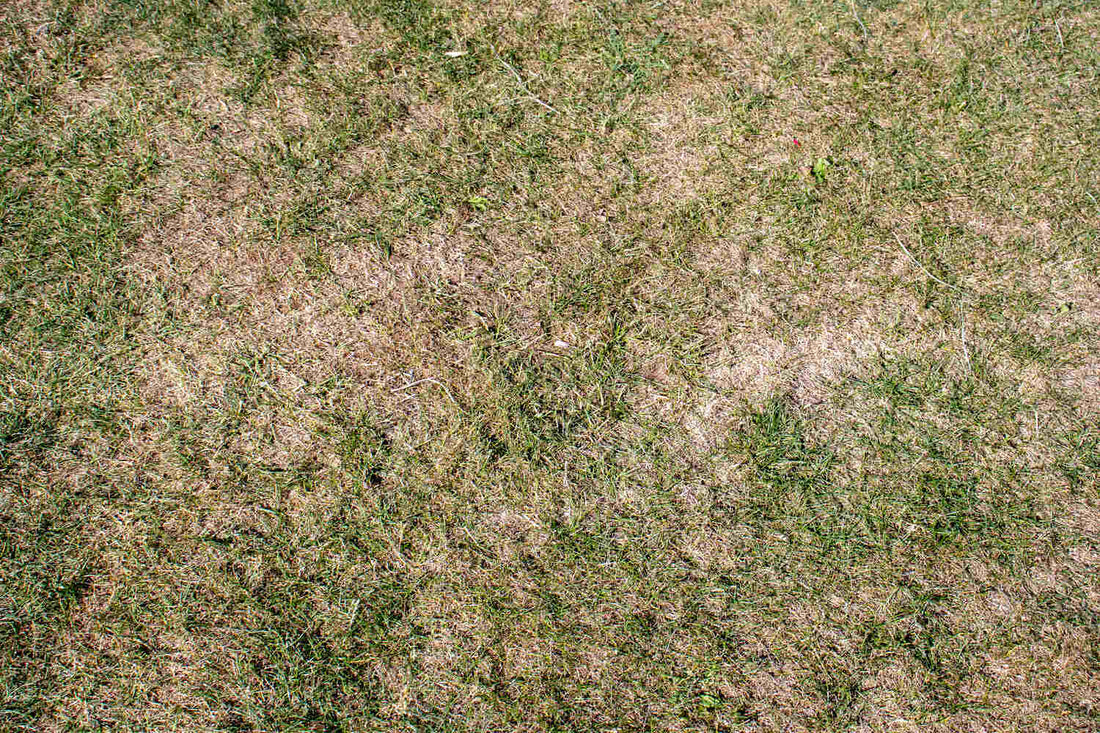When patches show up on your lawn, they can be a real eyesore. The right grass seed can make all the difference, ensuring those bare spots quickly blend back into the rest of your yard.
Finding the best grass seed for patches is key to filling in those gaps and creating a seamless, vibrant lawn.
Let's dive into how to choose the best seed for your lawn, depending on where you live, your soil type, and your grass goals.
What this article covers:- Understanding Patchy Lawns: Common Causes
- Choosing the Right Grass Seed for Your Region
- Top Grass Seed Options for Lawn Patches
- How to Patch Bare Spots with Grass Seed
- DIY vs. Lawn Patch Repair Mixes
- Tips for Successful Lawn Patching
Understanding Patchy Lawns: Common Causes
Patches can appear for many reasons—everything from heavy foot traffic and pet activity to drought, pests, or nutrient-poor soil.
Sometimes it's unavoidable, especially in areas with extreme weather shifts. Based on our observations, we've noticed that identifying the root cause can help prevent future patching needs.
So, if you see a consistent pattern in your patches, it might be worth a deeper look into soil health or even watering practices.

Choosing the Right Grass Seed for Your Region
Different regions need different types of grass seed for successful patch repair.
Choosing the right seed helps the new grass blend smoothly with the rest of your lawn, resist regional challenges, and stay green. Here's a quick look at what you'll want in various areas:
- Alabama: Warm-season grasses like Bermuda and Zoysia work well, offering resilience against southern heat.
- Kansas: Kentucky Bluegrass and Tall Fescue handle Kansas's unpredictable weather, providing durability and adaptability.
- Long Island: A mix of cool-season grasses like Ryegrass and Bluegrass creates a lush lawn that tolerates cooler New York temperatures.
- Nebraska: Tall Fescue is a great option here, handling the colder winters and drier summers.
- Oregon: Fine Fescues and Ryegrass thrive in the Pacific Northwest, as they're more resistant to wet conditions.
- Charlotte, NC: Bermuda grass and Fescue are good choices for the humid, mild climate in the Charlotte area.
- Northern California: Consider Ryegrass or Bluegrass for cool-season strength, or Bermuda for warmer regions.
With these choices, you'll have a better chance of choosing the best grass seed for alabama, best grass seed for kansas, and best grass seed for long island—tailoring your seed selection to match the environment.
Top Grass Seed Options for Lawn Patches
When it comes to patch repair, certain types of grass stand out for their ability to establish quickly, withstand various weather conditions, and even spread to fill bare spots naturally.
Kentucky Bluegrass (Self-Repairing Grasses)
Kentucky Bluegrass is a classic for northern regions and is known for its self-repairing properties. This means it spreads on its own, filling in gaps over time, making it ideal for lawn owners who want minimal maintenance after initial seeding.
Fine Fescues (Drought-Tolerant Grass Seeds)
Fine Fescues are champions in low-water environments, thriving in places where drought tolerance is necessary.
They're also good at establishing quickly, especially in areas with light foot traffic.
These are a great choice if you're after the best grass seed for poor soil, as they don't demand rich, high-quality soil to take root.

How to Patch Bare Spots with Grass Seed
The process of patching up bare spots requires a few simple steps, and with the right grass seed, you'll be on your way to a fuller, healthier lawn.
- Prepare the Area: Remove any debris and loosen the soil where you'll be seeding.
- Apply Grass Seed: Spread the grass seed evenly over the patch. Choose a mix if you want faster establishment and greater durability.
- Cover and Water: Lightly cover the seed with a thin layer of soil or compost and keep it moist. This helps the seeds germinate and anchor into the soil.
- Ongoing Care: Water daily until the grass reaches about two inches in height, then reduce watering gradually.
DIY vs. Lawn Patch Repair Mixes
Patch repair kits often combine grass seed with fertilizer and mulch, making them an efficient choice for quick repairs.
DIY patching, however, allows you to pick specific seed varieties that match your lawn's exact needs, which can be especially useful if your lawn has specific challenges.
From what we've seen, a DIY approach can often be more effective if you're dealing with unique environmental factors—like sandy soil or high-traffic zones—that require a specific type of seed.

Tips for Successful Lawn Patching
Here are a few extra tips to keep those patches looking their best:
- Timing Matters: Aim to patch bare spots in spring or fall. The milder temperatures will help with germination, especially for cool-season grasses.
- Keep Foot Traffic Off: New grass needs time to establish, so try to keep the area free from heavy activity.
- Mow High, Not Low: Mowing high helps keep new grass shaded and protected, encouraging deeper root growth and more resilience in the long run.
Conclusion
With the right approach and as trusted experts in lawn care, we're confident that choosing the best grass seed for your patches will result in a seamless, beautiful lawn.
Our recommendation here at Lawn Synergy is to choose seed types that align with your region, lawn goals, and soil type. From best grass seed for charlotte nc to best grass seed for northern california, there are options that will not only fill in patches but will thrive in your specific conditions.
Whether you're using a DIY approach or a pre-mixed repair kit, taking care of bare spots promptly will keep your lawn healthy and green year-round.
For any further guidance, Lawn Synergy is here to help you grow the lush, strong lawn you're proud of.
If you want to learn more, why not check out these articles below:
- Best Grass Seed for Nebraska
- Best Grass Seed for Oregon
- Best Grass Seed for South Carolina
- Best Grass Seed for Texas
- Best Grass Seed for New England
- Best Grass Seed for Minnesota
- Best Grass Seed for Massachusetts
- Best Grass Seed for Indiana
- Best Grass Seed for Utah
- Best Grass Seed for PNW
- Best Grass Seed for Missouri
- Best Grass Seed for Maryland
- Best Grass Seed for Illinois
- Best Grass Seed for Wisconsin
- Best Grass Seed for NY

